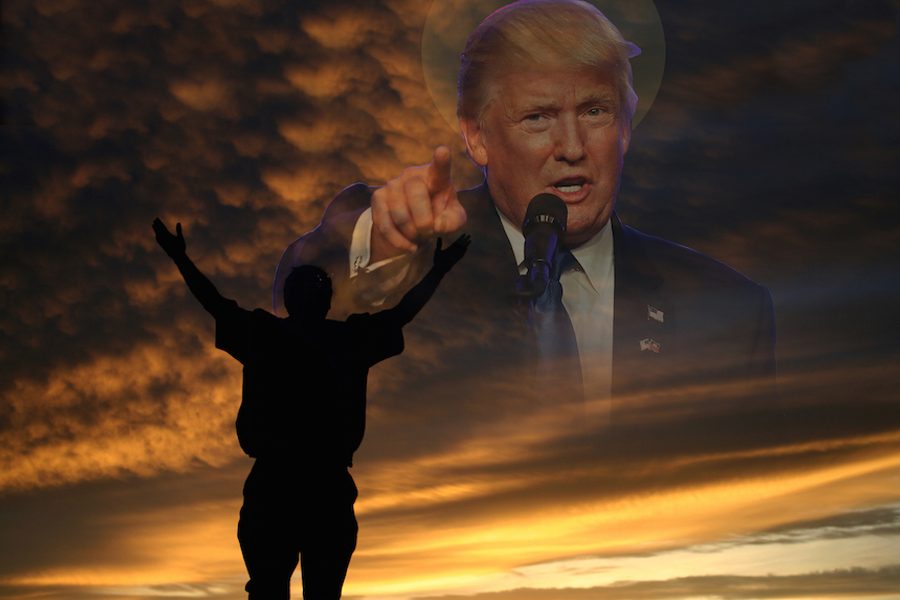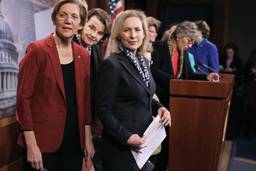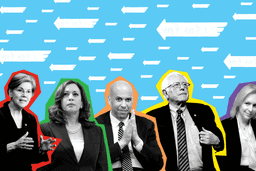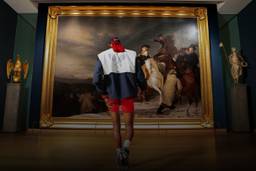The High Priest of the Church of Trump
How Stephen Bannon is using evangelical narratives to spread the gospel of Trumpism.
Theo Anderson

Stephen Bannon, chief strategist for Donald Trump, has done well for himself by posing as an anti-establishment wrecking ball. Bannon, now 63, was a Navy officer and a Goldman Sachs investment banker in his youth. Since the 1990s, he’s become a media mogul and the executive chairman of Breitbart News, the influential website that he has built into a platform for the white supremacist movement that calls itself the alt-right. His other media efforts include directing nine films, primarily straight-to-video productions that appeal to a small but fervent conservative audience: tributes to Sarah Palin and Ronald Reagan, for example, and an attempted exposé of the Occupy movement.
A writer for Politico recently watched Bannon’s oeuvre—all nine films—and reported that a through line emerges: “Western civilization as we know it is under attack by forces that are demonic or foreign. … The Big Banks, the Establishment, Hollywood, the Left, the Right—to all of them, Bannon insists, the ‘forgotten man’ is a potential mark in the long con that threatens to topple the Judeo-Christian West.”
Andrew Breitbart, the website's founder, once described Bannon as the Tea Party’s Leni Riefenstahl. Bannon is open about his ambition and relishes the role of provocateur. “Darkness is good,” he recently told the The Hollywood Reporter. “Dick Cheney. Darth Vader. Satan. That’s power.” Bannon, who grew up Catholic, has also said that he’s a Leninist who wants “to bring everything crashing down, and destroy all of today’s establishment.”
Bannon and Trump were introduced in 2011 by an activist who collaborated with Bannon on some of his films. Bannon cultivated the relationship over the years, sensing in Trump a potential ally in galvanizing a revolutionary, right-wing populist revolt. In 2015, when Trump announced his candidacy for the GOP nomination, Breitbart became his strongest and most explicit media ally, even as the site was undergoing “a noticeable shift,” as the Southern Poverty Law Center noted, “toward embracing ideas on the extremist fringe of the conservative right. Racist ideas. Anti-Muslim and anti-immigrant ideas.” In August 2016, his campaign sputtering, Trump named Bannon senior adviser. Five days after the election, Trump named Bannon the new administration’s chief strategist.
Trump’s strange appeal to white evangelicals has been much discussed. On the surface, it’s just as odd that Bannon—a Satan admirer—would be in harmony with them. Yet the team of Trump and Bannon performed spectacularly well with white evangelicals. A 2014 Pew Research survey found that about one-third of registered voters identified as evangelical. In November 2016, white evangelicals gave Trump 81 percent of their vote. The Public Religion Research Institute noted that Trump won in swing states that had “high concentrations of white Christians—including Iowa (64 percent), Wisconsin (63 percent), Ohio (58 percent) and Pennsylvania (57 percent).” How does one account for this powerful and perhaps revolutionary symbiosis between Trump, Bannon and evangelicals? Breitbart points to an answer, and to a fundamental threat facing American democracy in the Trump era.
The Oxford English Dictionary recently named “post-truth” its word of the year, defining it as “relating to or denoting circumstances in which objective facts are less influential in shaping public opinion than appeals to emotion and personal belief.” Breitbart is a post-truth juggernaut. In 2015, its editor explained to Bloomberg Businessweek that the site’s founder understood “that most readers don’t approach the news as a clinical exercise in absorbing facts, but experience it viscerally as an ongoing drama, with distinct story lines, heroes and villains.” That approach remains intact under Bannon, the editor said, with Breitbart’s villians being “immigration, ISIS, race riots and what we call ‘the collapse of traditional values.’ But I’d say Hillary Clinton is tops.”
This post-truth approach to persuasion resonates with evangelicals. They, too, have a story with heroes and villains. They have “truth” that appeals to personal belief. As with Breitbart, their story and their truth are anti-establishment and exclusive, to the point that common ground with those outside the fold becomes impossible. Their goal may not be “to bring everything crashing down,” as Bannon claims to want. Yet that may be the end result.
Spreading the good news
Since the late 19th century, evangelicals have defined themselves against a secular establishment that, they believe, has betrayed the true Christian faith and the necessity of a “personal relationship” with Jesus. For evangelicals, the core of Christianity is a conversion experience, and the essence of being evangelical is to share one’s faith with others.
That mandate has driven them to master each new wave of media technology. The National Association of Religious Broadcasters, an advocacy group that is explicitly evangelical in its orientation, claims a membership of more than 1,100 organizations. Among the most influential Christian broadcasters is the Salem Radio Network, which distributes programming to about 2,300 radio stations and supports eight daily political talk shows, all of them from a right-wing perspective.
Their influence extends into main-stream media. Hugh Hewitt, for example, the most famous of the eight talk show hosts, appears regularly on Fox News, CNN and the major network political shows. Salem distributes his daily, three-hour radio show to 300 stations. Viewers and listeners are given an overarching narrative that makes sense of the world. God is in control of human affairs, everything hinges on a person’s or a society’s faith in Jesus, and the mainstream institutions of American society have forsaken these truths. For many of the evangelicals who make up Trump’s base, truth isn’t something to be established and verified by evidence. It’s something to be believed.
The corollary of this post-truth approach has been perpetual scapegoating: naming the groups and institutions that have led the nation away from a right relationship with God. Across the decades, the culprits have included African Americans, Catholics, Jews, immigrants (first from non-Protestant European countries, then from Latin America and Asia), and the influence of socialism and communism, with their focus on the material world.
Breitbart and Trump’s rhetoric echoes this demonization of the defilers of true Christianity. Both play to the master narrative of evangelicalism: We are in the midst of a crisis, and “they” are the reason for the chaos. That was the explicit point of Trump’s demonization of Mexican immigrants as rapists during his campaign, and of his call to impose a ban on Muslims entering the U.S. It was the subtext, too, of his comparison of “inner cities” to war zones where African-Americans have “nothing to lose.”
But Trump’s scapegoating goes beyond racial and religious bigotry. He and Bannon added a new villain: crony capitalism.
Bannon laid out his critique of capitalism at length in 2014, speaking by video to a conference on poverty held at the Vatican. He noted that “not one criminal charge has ever been brought to any bank executive associated with the 2008 crisis. … No bonuses and none of their equity was taken. … Middle-class taxpayers, people that are working-class people … bailed out the elites.” This dysfunction is a symptom of spiritual sickness, according to Bannon. Capitalism was once small-scale and entrepreneurial. Today, though, the benefits have gone primarily to the elites. Crony capitalism, which has undermined the “spiritual and moral foundations of Christianity,” has prevailed. The result is “a crisis of our faith, a crisis of the West, a crisis of capitalism.”
Such themes also pervaded Trump’s stump speeches. In June 2016, during a campaign stop at a metals recycling plant in Pennsylvania, Trump explained that “our politicians have aggressively pursued a policy of globalization—moving our jobs, our wealth and our factories to Mexico and overseas.” That process, he said, “has made the financial elite who donate to politicians very wealthy. But it has left millions of our workers with nothing but poverty and heartache.”
What’s novel about all of this, in the recent American context, is the blend of a religiously rooted social vision with a potent economic populism. Trump and Bannon cast Trump in the role of our savior from crony capitalism, come to cleanse the temple of the money changers.
Testing the faithful
In July 2016, Breitbart reported that it had 192 million pageviews—up from about 12 million per month in 2012. And its influence seems to be growing within the federal government. In early December, the House Committee on Science, Space and Technology tweeted a link to a Breitbart article claiming that El Niño caused the spike in global temperatures in 2016, and that “the last three years may eventually come to be seen as the final death rattle of the global warming scare.” Under Trump, Breitbart's reach will continue to soar.
What’s about to unfold is a case of cognitive dissonance on a monumental scale, as Bannon and Trump, through Breitbart and other sympathetic media, pose as champions of the working class, even as the policies that the GOP pursues—tax cuts for the wealthy, the privatization of Medicare and public schools, the repeal of Obamacare and much more—sharply increase inequality. The faith of the evangelicals who put him in office will be tested.
Some cracks in the wall of support are already evident. After Trump negotiated with the Carrier company to keep some of its manufacturing jobs in Indiana, Sarah Palin, an evangelical icon who had endorsed Trump, protested vigorously: “Republicans oppose this, remember?” she wrote. “Because we know special interest crony capitalism is one big fail.” And the conservative firebrand Joe Walsh, formerly a congressman from Illinois, recently tweeted in response to Trump’s cabinet appointments: “Mr Trump, this is bullshit. Can you hire someone who doesn't work for Goldman Sachs? What about that swamp? Huh?”
Democrats, effectively shut out of power, will serve as a weak scapegoat for Trump’s failure to deliver on the populist fantasies he has spun. But one of the great dangers of our post-truth era is that the devastation wrought by his policies will inspire not disillusionment with Trump, but ever-more anger and resentment toward racial minorities, immigrants and the poor, who supposedly corrupt and game the system—rather than on the politicians whose policies actually create the pain and dysfunction.
Reason has its limits. This has always been the great dilemma of democracy. Self-government demands of us a certain faith—namely, faith in each other and in the idea that the better angels of our nature will ultimately prevail. But long before this post-truth age, faith had a dark side: the power to not only bind us together but to tear us apart. Misplaced faith—in bad leaders, bad ideas, bad policies—is too easily manipulated for dark purposes.
Bannon and Trump have cultivated and capitalized on this latter sort of faith. They are galvanizing it against progressivism with all the post-truth allies they can muster. It will take ev- ery tool at our disposal—truth, faith, facts, stories and more—to meet the challenge.









